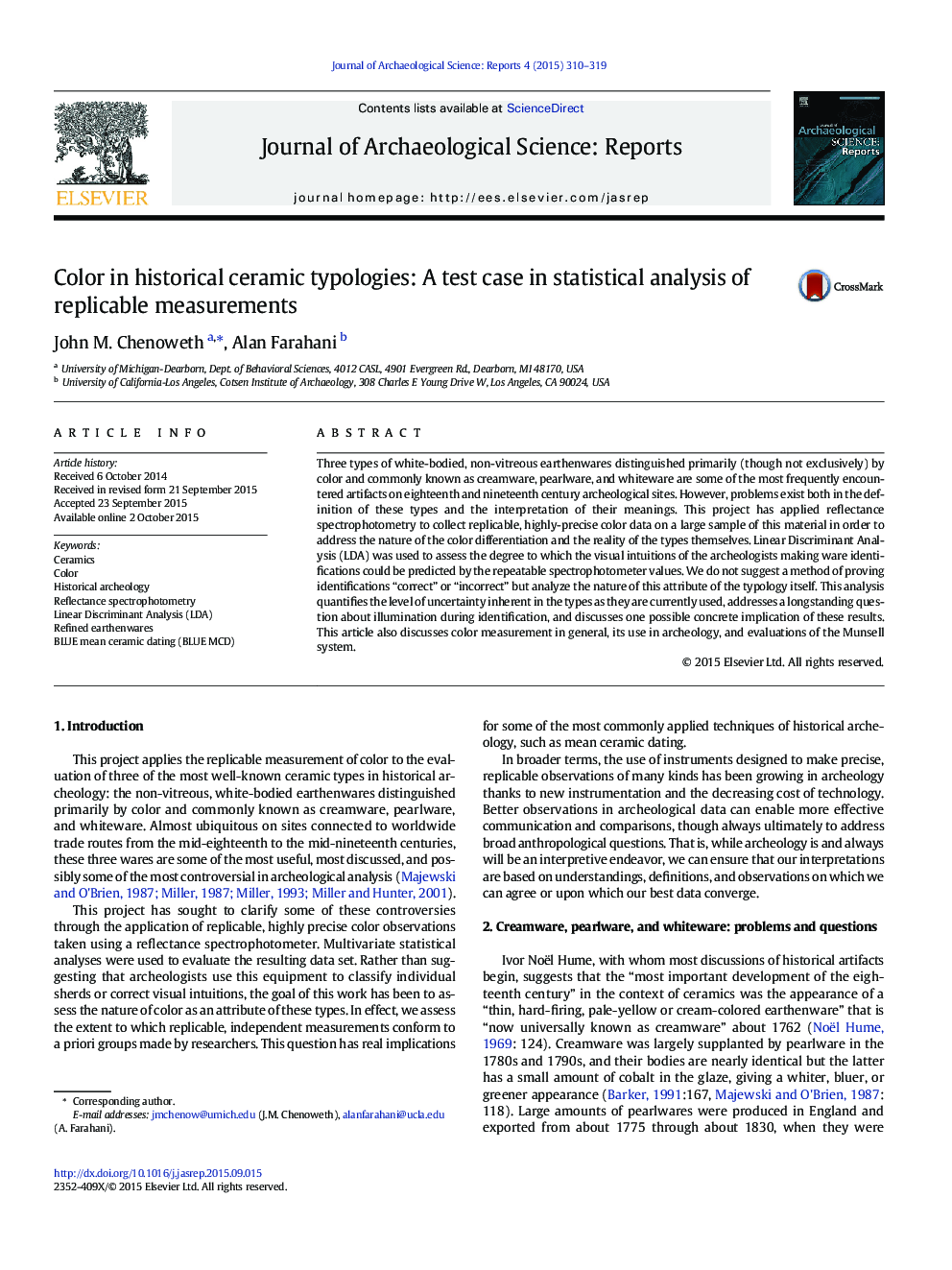| Article ID | Journal | Published Year | Pages | File Type |
|---|---|---|---|---|
| 7446208 | Journal of Archaeological Science: Reports | 2015 | 10 Pages |
Abstract
Three types of white-bodied, non-vitreous earthenwares distinguished primarily (though not exclusively) by color and commonly known as creamware, pearlware, and whiteware are some of the most frequently encountered artifacts on eighteenth and nineteenth century archeological sites. However, problems exist both in the definition of these types and the interpretation of their meanings. This project has applied reflectance spectrophotometry to collect replicable, highly-precise color data on a large sample of this material in order to address the nature of the color differentiation and the reality of the types themselves. Linear Discriminant Analysis (LDA) was used to assess the degree to which the visual intuitions of the archeologists making ware identifications could be predicted by the repeatable spectrophotometer values. We do not suggest a method of proving identifications “correct” or “incorrect” but analyze the nature of this attribute of the typology itself. This analysis quantifies the level of uncertainty inherent in the types as they are currently used, addresses a longstanding question about illumination during identification, and discusses one possible concrete implication of these results. This article also discusses color measurement in general, its use in archeology, and evaluations of the Munsell system.
Related Topics
Social Sciences and Humanities
Arts and Humanities
History
Authors
John M. Chenoweth, Alan Farahani,
